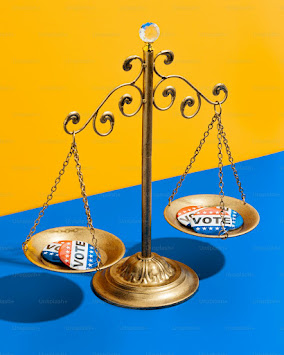The political systems of Canada and the United States are both rooted in democratic principles, but they have evolved in distinct ways, reflecting their unique histories, cultures, and societal values.
Understanding these differences is crucial for appreciating how each country functions and the implications for their citizens.
In this article, we'll delve into the key aspects that distinguish the political systems of Canada and the United States, exploring governance structures, election processes, political parties, and more.
Governance Structures
1. Canada's Parliamentary System
Canada operates under a parliamentary system of government, modelled after the British system. The key components include
The Monarch
As a constitutional monarchy, Canada recognizes the British monarch as the head of state, represented domestically by the Governor General.
The Prime Minister
The head of government, typically the leader of the majority party in the House of Commons.
Parliament
Consists of two houses – the elected House of Commons and the appointed Senate.
2. The United States' Presidential System
In contrast, the United States has a presidential system characterized by a clear separation of powers
The President
Serves as both head of state and head of government, elected independently of the legislature.
Congress
Bicameral, comprising the Senate and the House of Representatives, both elected bodies with distinct powers and responsibilities.
The Judiciary
An independent branch tasked with interpreting laws and ensuring they adhere to the Constitution.
Election Processes
Canadian Elections
Canadian elections are governed by a parliamentary framework
Frequency
Federal elections are held every four years, but the Prime Minister can call for elections earlier.
Representation
Canada uses a first past-the-post system in single-member districts.
Political Parties
The party with the most seats typically forms the government, with the leader becoming Prime Minister.
U.S. Elections
U.S. elections are more frequent and complex
Frequency
Presidential elections occur every four years, congressional elections every two years.
Representation
The U.S. also uses a first past-the-post system, but with an Electoral College for presidential elections.
Political Parties
Dominated by two major parties, Republicans and Democrats, with occasional third-party candidates.
Political Parties and Ideologies
2. Canada
Canada's political landscape features several major parties
Liberal Party
Generally centrist, with progressive policies on social issues and moderate economic reforms.
Conservative Party
Right leaning, advocating for free market policies and traditional social values.
New Democratic Party (NDP)
Left leaning, focusing on social justice, healthcare, and labour rights.
Bloc Québécois
Promotes Quebec nationalism and interests.
Green Party
Prioritizes environmental issues and sustainability.
2. United States
The U.S. is primarily a two-party system
Democratic Party
Center-left, advocating for progressive social policies, expanded healthcare, and economic regulation.
Republican Party
Center-right, emphasizing free market principles, lower taxes, and conservative social policies.
Federalism and Division of Powers
Canada's Federalism
Canada's federal system divides powers between the federal government and provinces
Federal Responsibilities
National defence, foreign policy, immigration, and trade.
Provincial Responsibilities
Education, healthcare, and local governance.
Shared Powers
Areas like transportation and environmental regulation.
U.S. Federalism
The U.S. also operates under a federal system
Federal Responsibilities
Similar to Canada, including defence, foreign policy, and interstate commerce.
State Responsibilities
Education, local law enforcement, and public health.
Concurrent Powers
Areas like taxation and infrastructure.
Judiciary and Legal Systems
1. Canada's Judiciary
Canada's judiciary is based on common law, with the Supreme Court as the highest authority
Appointment
Judges are appointed by the Prime Minister.
Role
Interprets laws and the Constitution, ensuring they align with democratic principles.
2. U.S. Judiciary
The U.S. judiciary is similarly based on common law
Appointment
Judges, including Supreme Court Justices, are nominated by the President and confirmed by the Senate.
Role
Upholds the Constitution, with significant power in shaping American law and society.
Political Culture and Civic Engagement
1. Canada's Political Culture
Canada's political culture is characterized by
Bipartisanship
A tendency towards cooperation and compromise across party lines.
Civic Engagement
High levels of participation in elections and community affairs.
Multiculturalism
A strong emphasis on diversity and inclusion in public policy.
2. U.S. Political Culture
The U.S. political culture is marked by
Polarization
Increasing division and partisanship between Republicans and Democrats.
Individualism
A focus on personal freedom and self-reliance.
Activism
Robust tradition of grassroots movements and advocacy.
Final Thoughts
Understanding the differences between the political systems of Canada and the United States reveals much about their distinct national identities and governance philosophies.
While both countries share democratic values, their approaches to achieving these ideals vary significantly.
From governance structures to election processes and political cultures, these differences shape the lived experiences of their citizens and the functioning of their democracies.
Edited by Shugunpal Kaur
This article has been authored exclusively by the writer and is being presented on Eat My News, which serves as a platform for the community to voice their perspectives. As an entity, Eat My News cannot be held liable for the content or its accuracy. The views expressed in this article solely pertain to the author or writer. For further queries about the article or its content you can contact on this email address -kaurshugun65@gmail.com










0 Comments